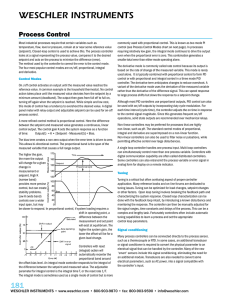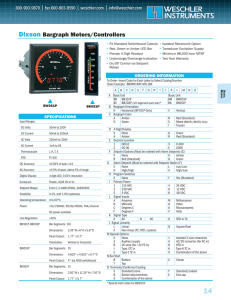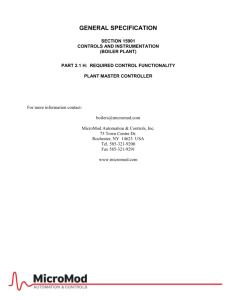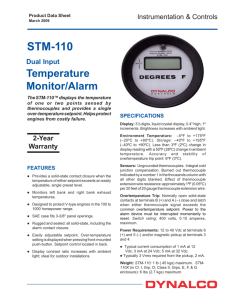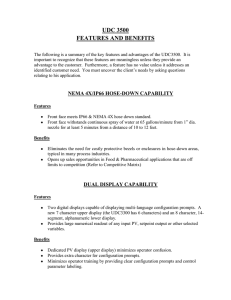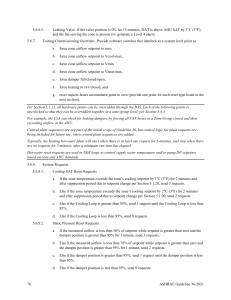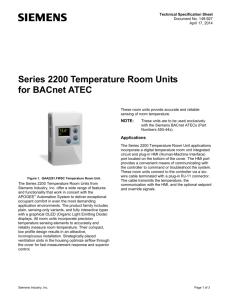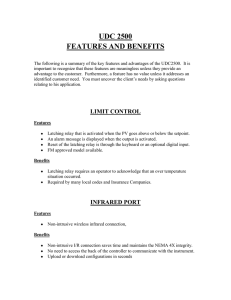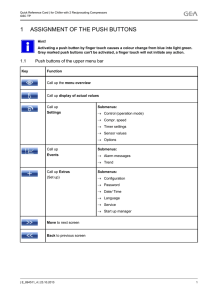Controllers
advertisement
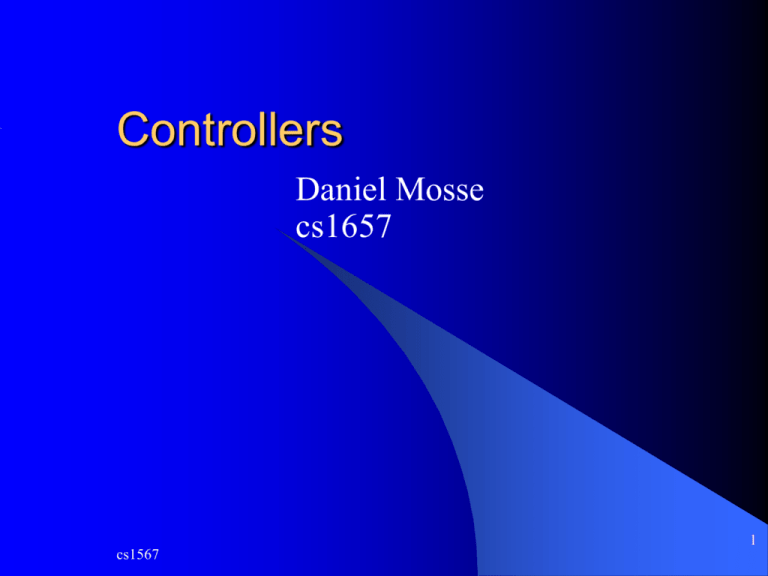
Controllers Daniel Mosse cs1657 1 cs1567 Introduction Suppose you have a system that needs to be controlled Your software gives commands, the system responds to it – Turn x degrees to the right – Move forward 15 wheel rotations Can you always trust your commands will be executed accurately? 2 cs1567 Problem example overshoot Ripple setpoint Increase the quantity until you get to the setpoint – Temperature, angle, speed, etc If too much, reduce the quantity, until the setpoint 3 cs1567 Closed loop controller setpoint error controller signal system output measured quantity • closed loop because it has feedback • output is measured at a certain frequency • signal is generated at a certain frequency • which frequency is not smaller? 4 cs1567 On-off control For some systems, on-off signaling is sufficient For example, a thermostat, when the heater is either on or off, and early cruise-control systems – Could do airflow or speed control also – More modern systems do it Depending on the frequency of control, overhead of on-off, etc, this could cause overshoots and undershoots (ripples) – Oscillation is a common behavior in control systems – Need to avoid it at all costs… well, almost all costs 5 cs1567 Proportional control Good alternative to on-off control: more “control” Signal becomes proportional to the error – P ( setpoint – output ) – Example, car speed for cruise control Need to find out value of constant P – Tuning the controller is a hard job – If P is too high, what happens? – If P is too low, what happens? Typically a prop cntrl decreases response time (quickly gets to the setpoint) but increases overshoot 6 cs1567 Adding derivative control To avoid (or reduce) overshoot/ripple, take into account how fast are you approaching the setpoint – If very fast, overshoot may be forthcoming: reduce the signal recommended by the proportional controller – If very slow, may never get to setpoint: increase the signal – In general: D ( current measure – previous measure) PD controllers are slower than P, but less oscillation, smaller overshoot/ripple 7 cs1567 Integral control There may still be error in the PD controller – For example, the output is close to setpoint P is very small and so is the error, discretization of signal will provide no change in the P controller D controller will not change signal, unless there is change in output Take the sum of the errors over time, even if they’re small, they’ll eventually add up – I * sum_over_time (setpoint — output) Again the main problem is the value of I Can we let sum grow to infinity? 8 cs1567 Summary Different types of controllers PID hardest task is tuning Controller Response time On-off Smallest Proportional Small Integral Decreases Derivative Increases Overshoot Error Highest Large Increases Decreases Large Small Zero Small change 9 cs1567 Where to Get More Information newton.ex.ac.uk/teaching/CDHW/Feedback/ ~don/cs1567/reference/pidworksheet.xls 10 cs1567

